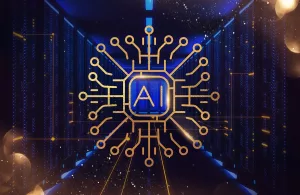How Modern Gadgets Affect Our Education System?

Technology has always been friends with creative minds who perceive it as a revolution to humankind. While 40% of the population still counts on the negative effects, the educational sector has welcomed its inventions with an open arm.
Started as the medium to exchange words for distant communication, the use of modern gadgets today ties with better education.
Back when traditional classrooms were limited to books and pre-defined learnings, the initiative of e-learning after the pitfalls of Covid-19 has now tossed the coin. If blackboards and books were the resources to communicate effectively, modern gadgets have transposed communication more conveniently.
According to a study, about 70% of students feel that online learning has been a boon for their careers. Having said that, modern gadgets like whiteboards, laptops, tablets, and projectors are helping with changing perspectives. Rather, changing styles of adapting and memorizing the digital modules.
The Positive Impact of Technology over Education
-
Efficient Learning:
Most of the students today are familiar with the controls and use of smart gadgets. From playing games to being active on social media, today’s generation spends most of their time surfing the internet. These young brains hardly need to be instructed on the use of various applications.
So, the introduction of online classes has further motivated them to dedicate more time to screens. With app-based learning, teaching methods have turned innovative and engaging, helping students understand the basics more efficiently.
-
A comfortable space:

As opposed to traditional classrooms, the concept of virtual learning at home makes an environment where students feel secure and less affected by competition.
For students who take time to learn complicated subjects, the convenience of learning at their own pace unwinds the mental pressure.
Few applications like FlipGrid and a few video streaming apps enjoy great popularity due to their live sessions. For educators, these apps let you record your videos and ask students to respond to them as per their schedule. Additionally, the live sessions bring forward different opinions and feedback from both ends. -
Easy to access:
Online classes have moved the burden of carrying books to locate data in one place. With cloud-based applications like Google Drive, Dropbox, and Evernote, storing information is now a single click away. As such, it gives them the freedom to access any piece of knowledge at any time of the day.
As per the study modules and educational websites, the students feel that reading online content is scannable and a great approach to learning easily.
-
Interactive presentations:
With the help of slides and infographics, the visual content of charts and images helps students remain focused on screens for a long time. The use of augmented reality and virtual reality applications also contributes to the motivation behind the focused screen time.
Even for teachers, the 3D representations by these applications allow an idea to teach students as per their style. If augmented reality imposes 3D pictures over real-world scenarios, the virtual reality apps show a different fictional view of teaching concepts. Through these apps, the content looks interesting to read and fun-filled that further motivates efficient learning.
-
Better communication:
Contrary to the old customs when students used to follow the instructions, e-learning works to embrace one on one interaction.
Any student online can speak up to the problems without having to schedule a time for it. Much to the relief, taking part in quizzes, surveys, polls, and live video sessions, teachers insight into the student’s progress. This, in turn, not only brings different teaching styles but also improves comprehension skills.
The Negative Impact Of Technology On Education
With many benefits, online education is rolled with negative effects too.
-
Connectivity issues:
It is one of the major concerns faced by most online users. The use of modern gadgets for online education calls for better connectivity to work in a hassle-free environment.
The consistent use of laptops and mobiles increases the need for secured Wi-Fi connections and high-tech cameras. No matter the quality, errors like failed wifi connections, blurred picture quality, disruptive video meetings, or broken audio connections are bound to restrict the communication. Above all, the loss of time in fixing such errors makes communication lose a smooth flow.
-
Negative health effects:
The most common problem with online learning is sedentary lifestyles causing adverse health problems. Not particularly physical health, but even mental health has been on the decline. Of all the most obvious reasons, more screen time weighs risks like back pains and rigid body postures.
Moreover, the long hours on laptops feel strenuous and so the students find difficulty balancing time on other activities. -
No social life:
Around 90% of students, in a recent survey, believe that online learning has put an end to social life. They have found an imbalance between dedicating time for friends amidst the online classes.
Moreover, the distance from the outside world and loss of personal touch between students and teachers is a major turn-off.
Final Words:
Earlier, when modern gadgets were considered a threat to careers, the modern education system has reversed the theory. Of late, many schools, colleges, and universities have made learning comfortable with the help of smart gadgets. That being said, the Covid-19 has been one such contributor to the growth of online education.
If efforts regarding time management and smart alternatives are implemented, it is possible to overcome the negative effects of learning on screens.








